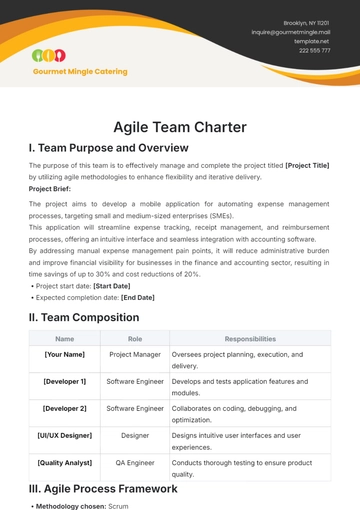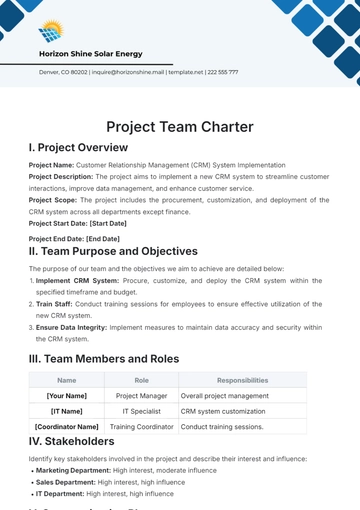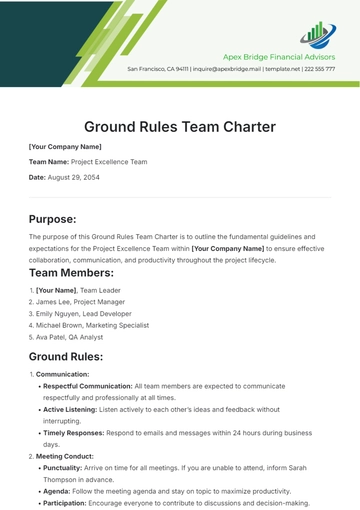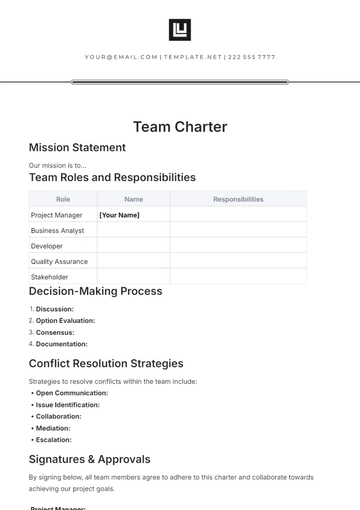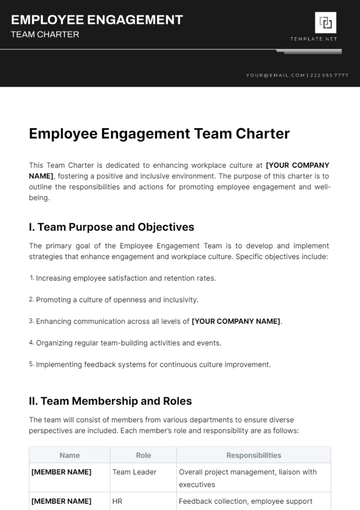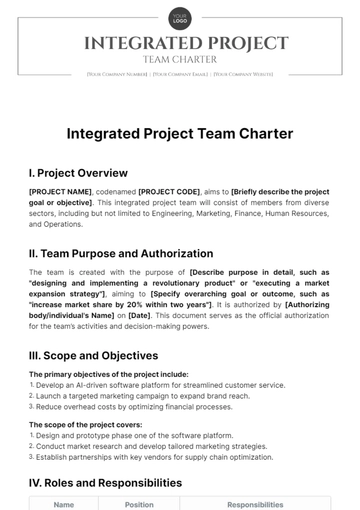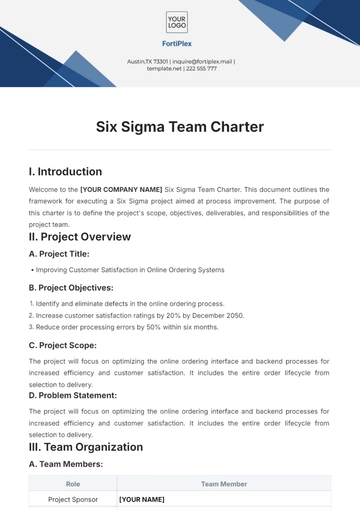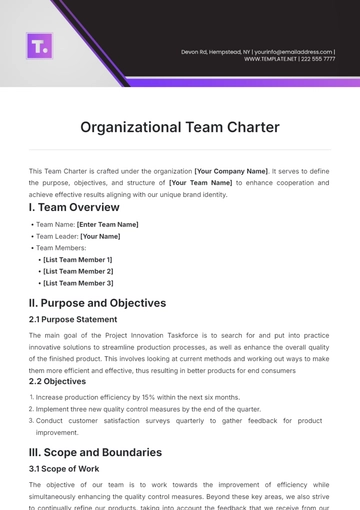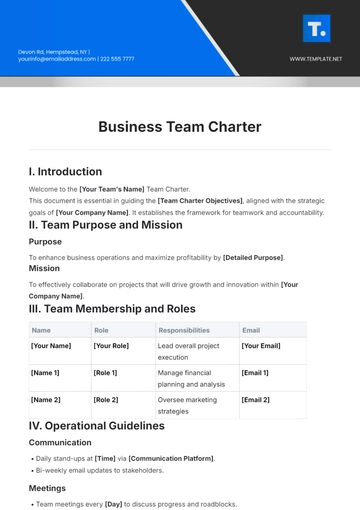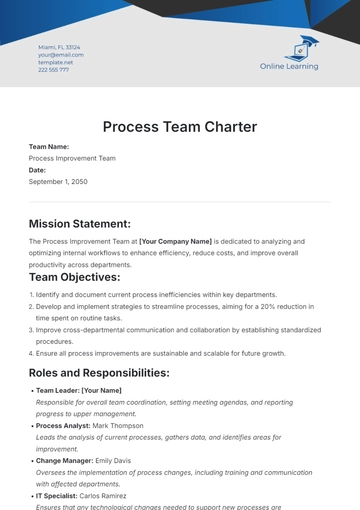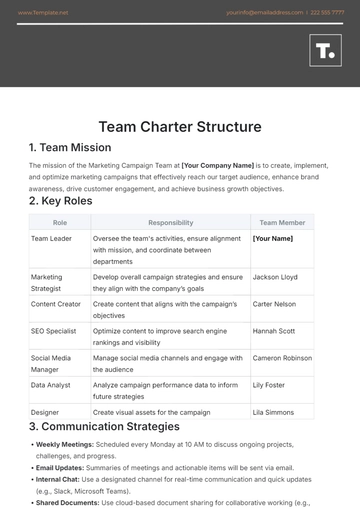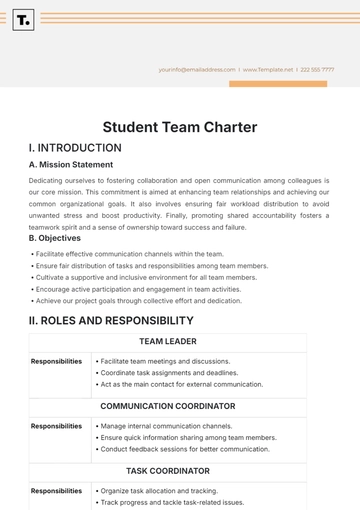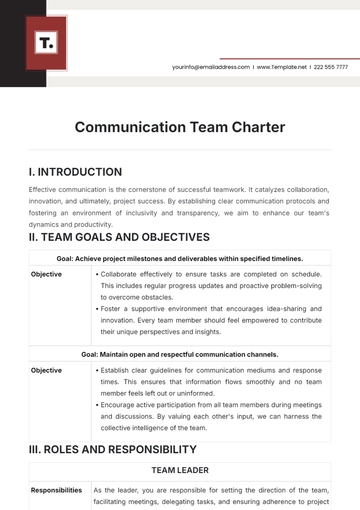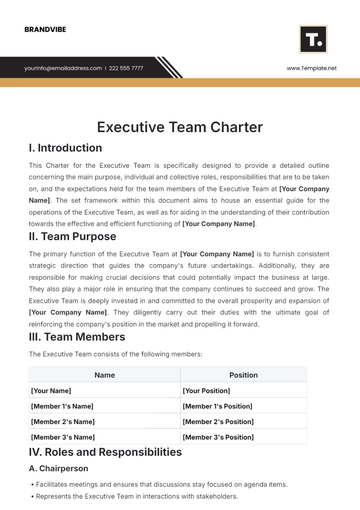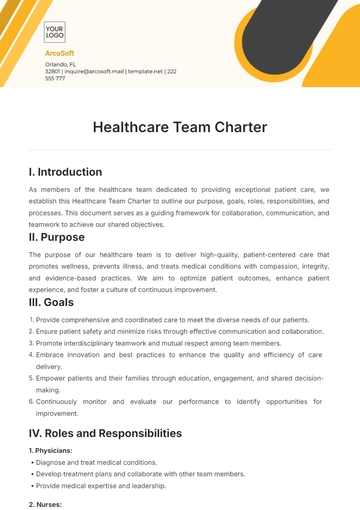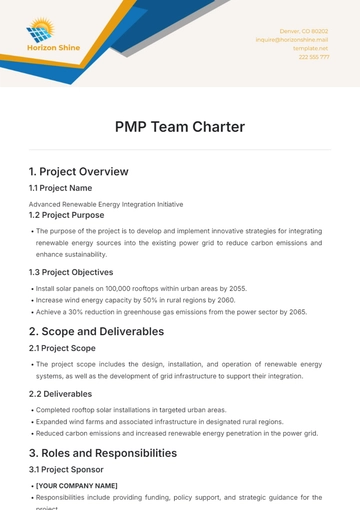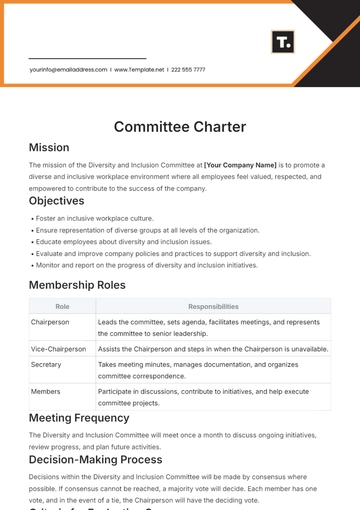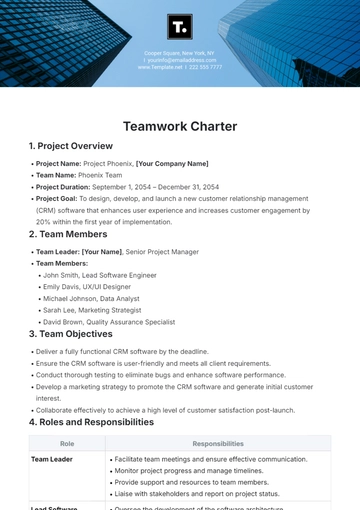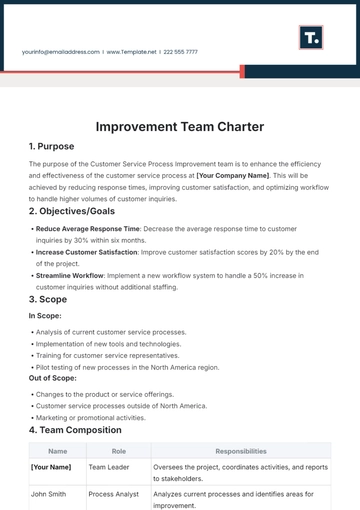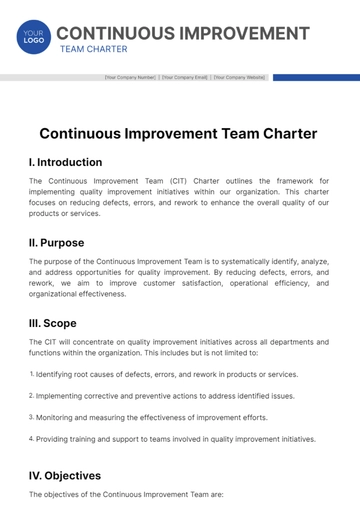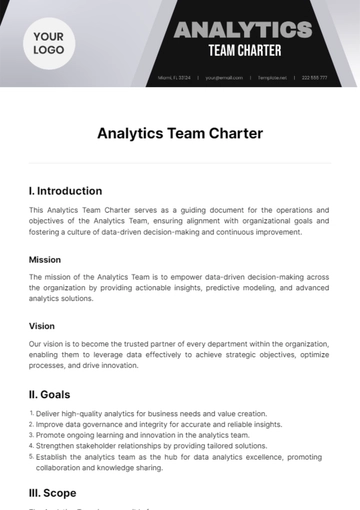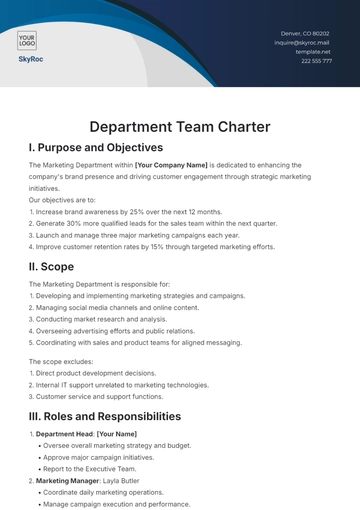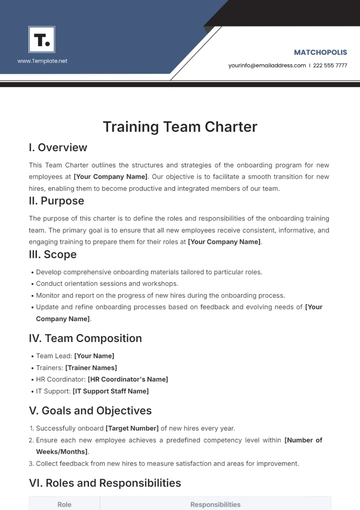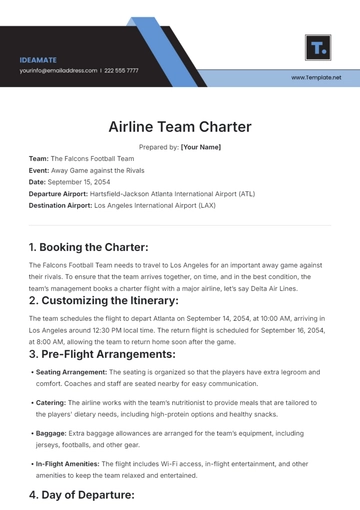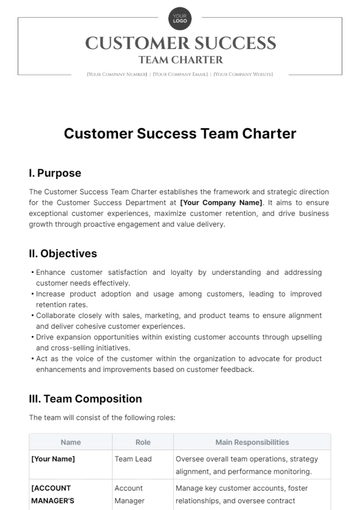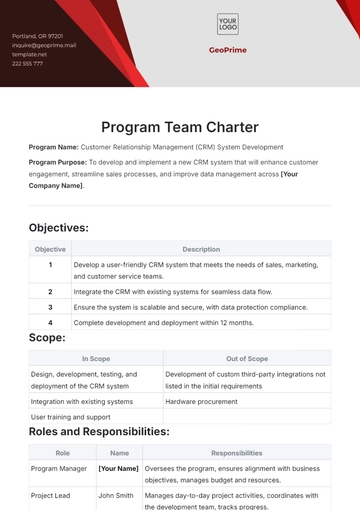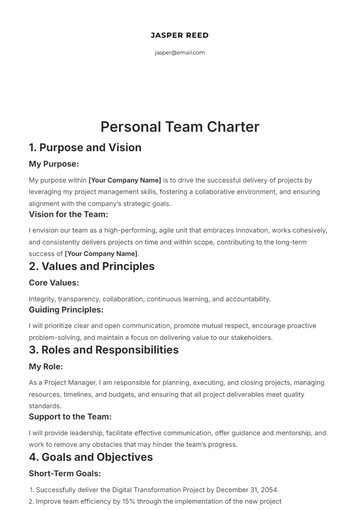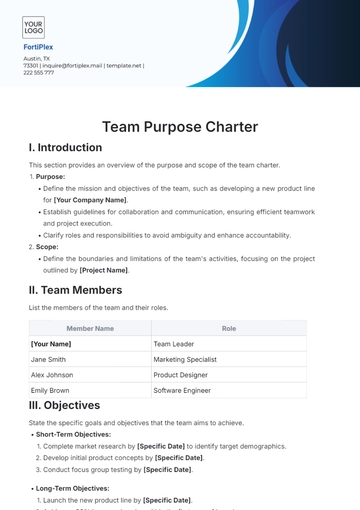Free Process Improvement Team Charter
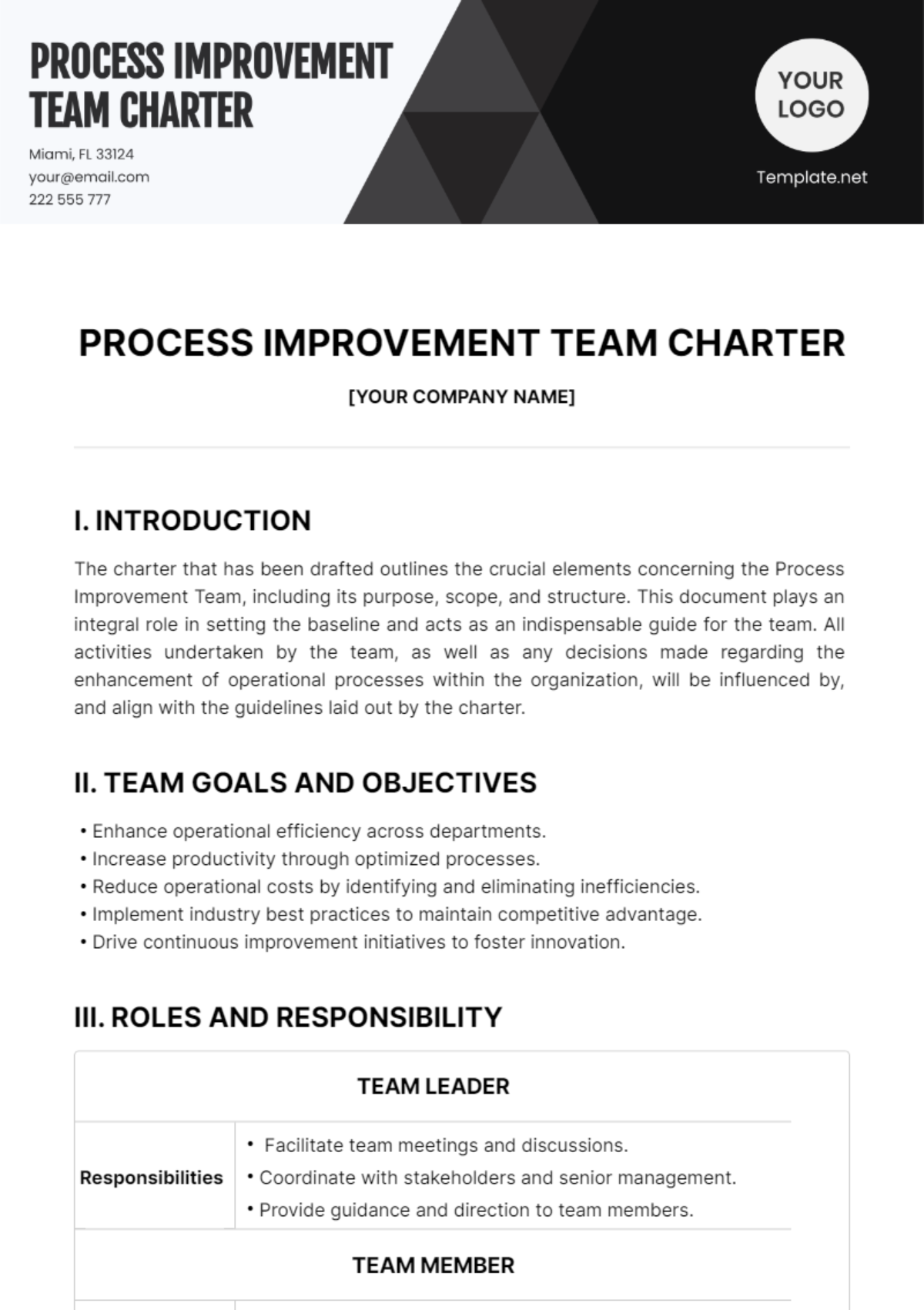
[YOUR COMPANY NAME]
I. INTRODUCTION
The charter that has been drafted outlines the crucial elements concerning the Process Improvement Team, including its purpose, scope, and structure. This document plays an integral role in setting the baseline and acts as an indispensable guide for the team. All activities undertaken by the team, as well as any decisions made regarding the enhancement of operational processes within the organization, will be influenced by, and align with the guidelines laid out by the charter.
II. TEAM GOALS AND OBJECTIVES
Enhance operational efficiency across departments.
Increase productivity through optimized processes.
Reduce operational costs by identifying and eliminating inefficiencies.
Implement industry best practices to maintain competitive advantage.
Drive continuous improvement initiatives to foster innovation.
III. ROLES AND RESPONSIBILITY
TEAM LEADER | |
Responsibilities |
|
TEAM MEMBER | |
Responsibilities |
|
STAKEHOLDERS | |
Responsibilities |
|
IV. COMMUNICATION PLAN
The team will communicate through weekly meetings, instant messaging, and periodic emails. Regular updates will be presented during monthly departmental meetings to ensure transparency and gather feedback. All communication should be concise and timely to ensure the effective execution of projects.
V. DECISION-MAKING PROCESS
A majority vote among key members will make team decisions. Major strategic or costly decisions need senior management approval.
DECISION PROTOCOL | |
| |
DECISION FRAMEWORK | |
| |
DECISION HIERARCHY | |
|
VI. RISK MANAGEMENT
At the project's start, potential risks will be identified and managed using a detailed mitigation plan which will help to minimize unforeseen issues. Each risk will have an owner for responsibility and necessary action, boosting project success.
Identify potential risks at project initiation
Develop a detailed risk mitigation plan
Assign owners to each identified risk for accountability
Implement proactive measures to minimize unforeseen issues
Regularly review and update the risk management plan
VII. TRAINING AND DEVELOPMENT
Team members will receive targeted training in process improvement, leadership, and team dynamics to boost team competency.
Specialized training sessions encompassing process improvement tools, leadership skills, and team dynamics will be provided to team members.
Training initiatives will be tailored to enhance competency levels within the team, focusing on relevant methodologies and best practices.
Emphasis will be placed on developing proficiency in process improvement tools, and leadership strategies, and fostering effective team dynamics.
Ongoing training and development opportunities will be integrated into the team's workflow to ensure sustained competence and growth.
The training program aims to equip team members with the necessary skills and knowledge to excel in their roles, fostering a culture of continuous improvement and collaboration.
VIII. PERFORMANCE MEASUREMENT AND REPORTING
Performance will be assessed based on key performance indicators (KPIs) established at the outset of the charter. Regular performance reports will be generated to evaluate the effectiveness of the improvement efforts and guide future directions.
Assessment based on predefined KPIs outlined in the charter
Creating periodic reports to gauge improvement efficacy.
Reports utilized to steer future directions
IX. CONTINGENCY PLANNING
The team will develop a comprehensive contingency plan to address potential scenarios that could hinder the progress of process improvement initiatives.
Development of a comprehensive contingency plan for potential hindrances to process improvement initiatives.
Identification and mitigation strategies for scenarios impacting progress.
Ensuring preparedness for unforeseen challenges through proactive planning.
X. LEGAL AND COMPLIANCE
All activities related to improving our processes will be carried out in strict alignment with all applicable legal and regulatory requirements. As part of this commitment to maintaining compliance, we will integrate checks for compliance into every step of our project cycle. This will aid us in ensuring an unwavering adherence to these regulations and rules throughout the entire duration of all our projects, ensuring our operations are always conducted within the parameters of the law.
XI. CONCLUSION
This Team Charter serves as a guiding framework for the Process Improvement Team at [YOUR COMPANY NAME]. By adhering to this charter, the team is committed to achieving significant improvements in the efficiency and effectiveness of organizational processes.
XII. SIGNATURES
Each team member acknowledges and agrees to the terms outlined in this charter by signing below:
Name | Date Signed | Signature |
|---|---|---|
[Your Name] | [DATE] |
|
[Team 1's Name] | [DATE] |
|
[Team 2's Name] | [DATE] |
|
- 100% Customizable, free editor
- Access 1 Million+ Templates, photo’s & graphics
- Download or share as a template
- Click and replace photos, graphics, text, backgrounds
- Resize, crop, AI write & more
- Access advanced editor
Enhance and Discover the Process Improvement Team Charter Template, exclusively from Template.net. Crafted for efficiency aficionados, this editable and customizable tool empowers your team to streamline processes seamlessly. Editable in our Ai Editor Tool, it's your key to cultivating operational excellence. Elevate your workflow with this essential resource today.

